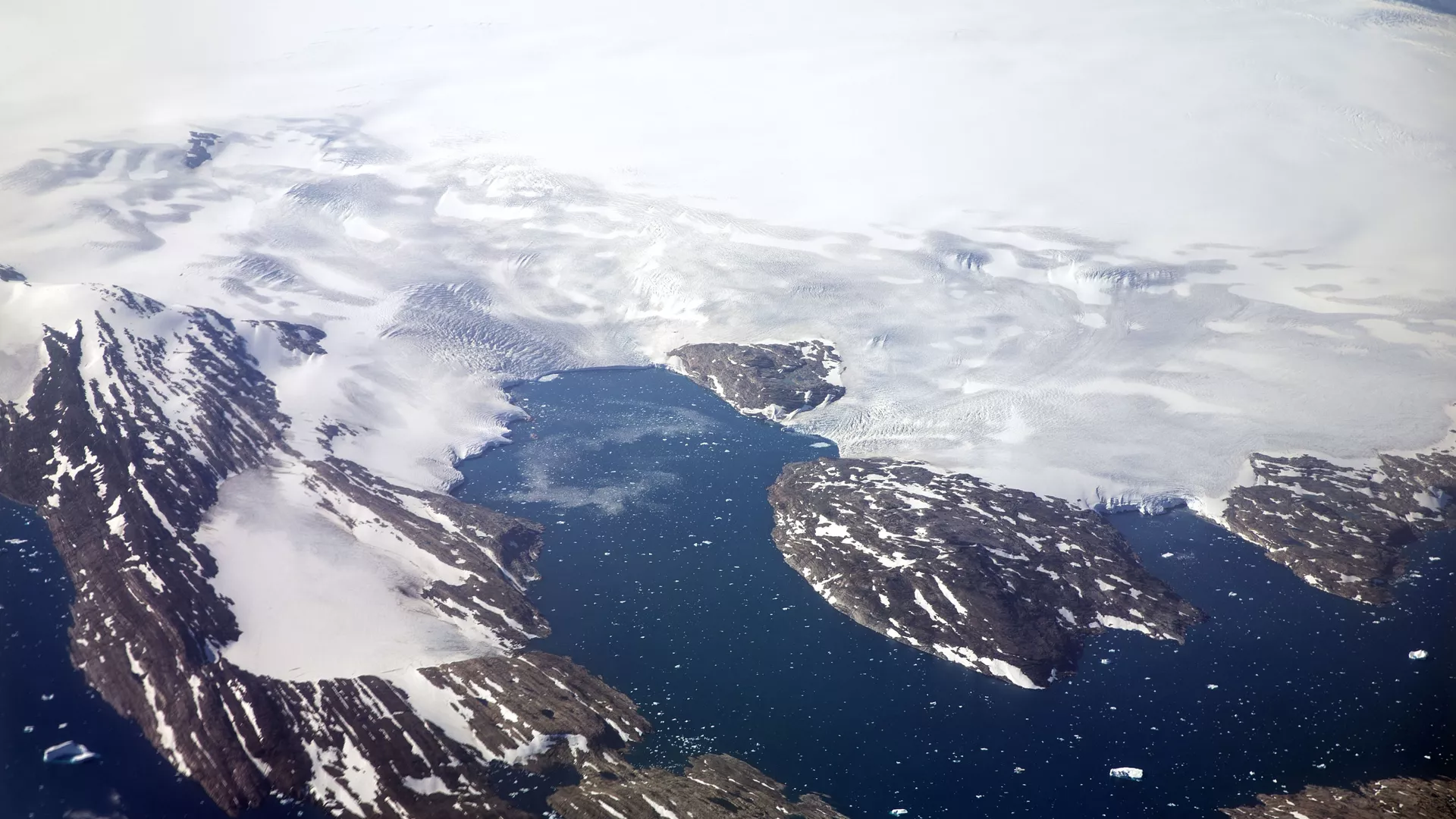Giant Prehistoric Crater in Greenland May Shed Light Upon Climate After Death of Dinosaurs
06:21 GMT 14.03.2022 (Updated: 06:27 GMT 14.03.2022)

© AP Photo / David Goldman
Subscribe
Dinosaurs went extinct about 65 million years ago, at the end of the Cretaceous Period, after dwelling on the Earth for about 165 million years.
A giant crater of with a diameter of 31 kilometres, buried under Greenland's massive ice shield, may cast more light on the historical climate, in particular how it changed following the extinction of the dinosaurs.
The Hiawatha crater, the remains of a huge asteroid impact one kilometre deep into Greenlandic ice, appeared to be many millions of years older that initially assumed, a joint research crew has established.
While initial research suggested that the impact could have happened some 13,000 years ago and played a role in a 1,000-year Ice Age, subsequent dating using rocks and sand grains from the crater suggested that we need to look much further back in history – millions of years back.
In a study published in the scientific journal Science Advances, researchers have found that the Hiawatha crater, initially found in 2015, is no less than 58 million years old, significantly older than the first version of 13,000 years.
“It is very surprising that there is such a big difference with our first guess,” Nicolaj Krog Larsen, Nicolaj Krog Larsen, professor at the Globe Institute at the University of Copenhagen, told TV2.
In a study published in the scientific journal Science Advances, researchers have found that the Hiawatha crater, initially found in 2015, is no less than 58 million years old, significantly older than the first version of 13,000 years.
“It is very surprising that there is such a big difference with our first guess,” Nicolaj Krog Larsen, Nicolaj Krog Larsen, professor at the Globe Institute at the University of Copenhagen, told TV2.
Given its age, the crater that predates all human life by millions of years opens up a new understanding of how the Earth evolved after the extinction of the dinosaurs, which occurred at the end of the Cretaceous Period some 65 million years ago.
“We can look at geological deposits from other areas and examine the consequences of the impact. Does it have an effect on the climate, animals and plants that lived in the northern regions?” Nicolaj Krog Larsen mused.
The asteroid exploded with a force equivalent to several million atomic bombs. The powerful impact created one of the largest craters on the planet, which nevertheless still is much smaller than its 200-kilometre-wide cousin Chicxulub in Mexico.
The Mexican crater is believed to be the remnant of the impact that wiped out the dinosaurs from the Earth. That explosion had catastrophic consequences and plunged the Earth into a protracted warming period that lasted about five million years.
Due to that warming, Greenland was a far cry from the rugged and bleak icy wasteland it is today. On the contrary, there was temperate rainforest and rich wildlife with temperatures up to 20 degrees in the summer, Nicolaj Krog Larsen explained.
The Mexican crater is believed to be the remnant of the impact that wiped out the dinosaurs from the Earth. That explosion had catastrophic consequences and plunged the Earth into a protracted warming period that lasted about five million years.
Due to that warming, Greenland was a far cry from the rugged and bleak icy wasteland it is today. On the contrary, there was temperate rainforest and rich wildlife with temperatures up to 20 degrees in the summer, Nicolaj Krog Larsen explained.
As of now, ice-covered Greenland and Antarctica may be the only places in the world where undiscovered craters may possibly remain.
“Finding a crater is in itself extremely rare, for the vast majority have been found”, Nicolaj Krog Larsen concluded.
“Finding a crater is in itself extremely rare, for the vast majority have been found”, Nicolaj Krog Larsen concluded.
Let's stay in touch no matter what! Follow our Telegram channels to get all the latest news:
Sputnik News US - https://t.me/sputniknewsus
Sputnik News India - https://t.me/sputniknewsindia


